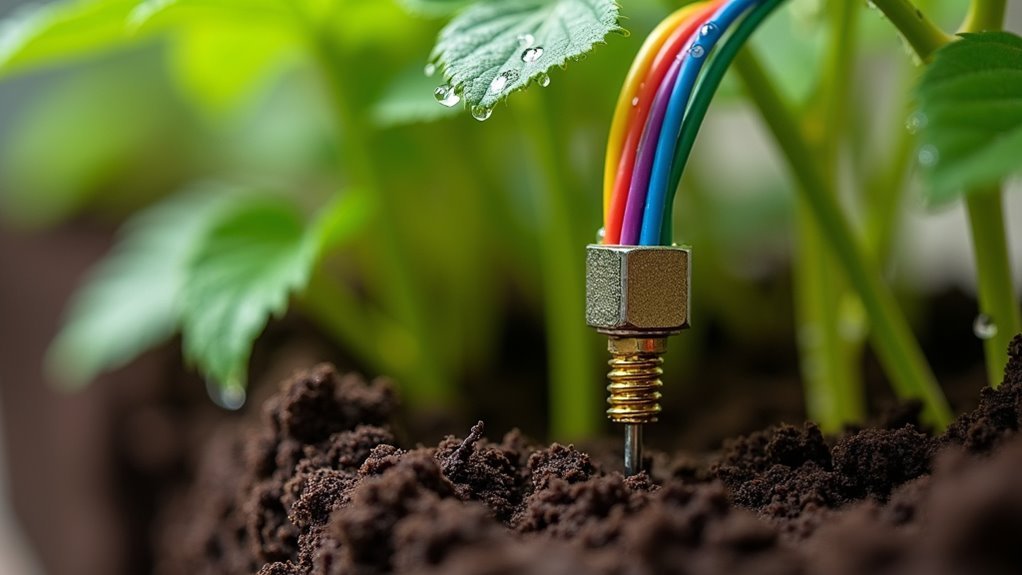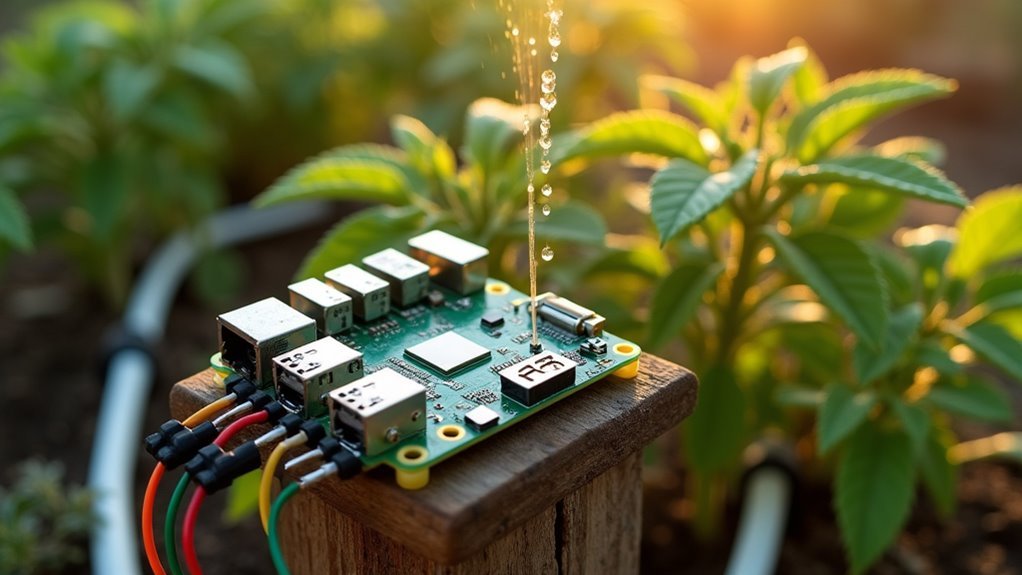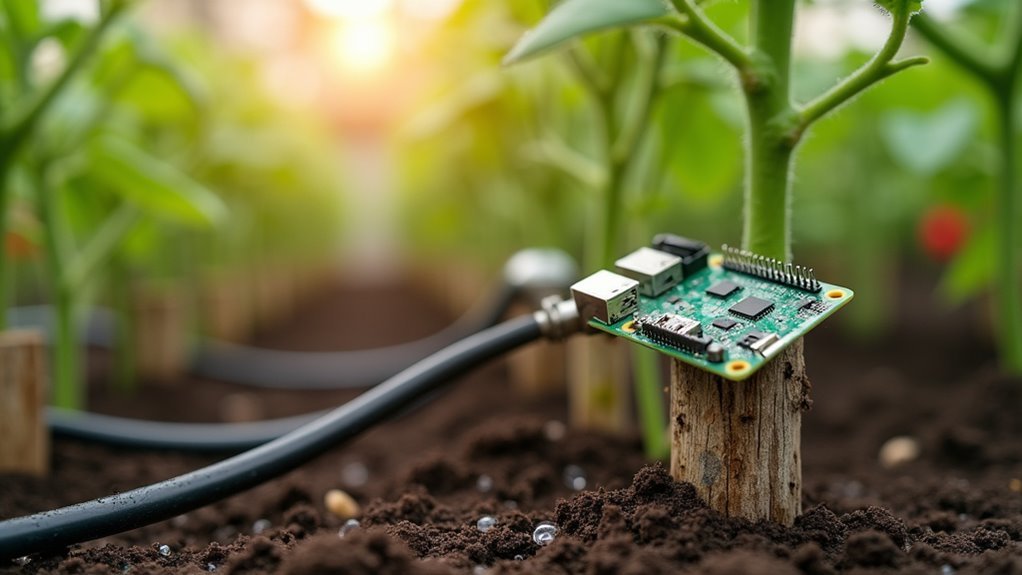You’re probably tired of watching your plants wither while you’re away or drowning them with too much water when you’re home. Setting up a Raspberry Pi irrigation system isn’t just about connecting a pump to your garden—it’s about creating a smart watering solution that responds to your plants’ actual needs. Three critical decisions you’ll make early on will determine whether your automated system becomes a game-changer or an expensive mistake.
Choose the Right Moisture Sensor for Accurate Soil Readings

Why settle for inaccurate readings when choosing the right moisture sensor can make or break your automated irrigation system?
You’ll want capacitive sensors over resistive ones—they’re corrosion-resistant and last longer when monitoring soil moisture levels. Confirm your moisture sensor’s sensitivity range matches your garden’s needs, typically spanning 0% to 100%.
Since soil composition affects accuracy, verify the sensor suits your specific plants and soil types.
Check compatibility with your Raspberry Pi, confirming seamless connection through ADC interfaces.
Don’t skip calibration—it’s vital for maintaining accuracy. Test your sensor in dry, moist, and saturated conditions to establish reliable baseline readings.
This upfront effort guarantees precise monitoring that keeps your garden thriving.
Set up Proper Pump Control With Mosfet Relays
The heart of your automated irrigation system lies in proper pump control, and Mosfet relays are your best solution for handling the higher current loads your water pump demands.
Unlike your Raspberry Pi’s GPIO pins, which can’t supply enough current directly, Mosfet relays support up to 30A safely.
Connect your pump’s negative terminal to the relay’s output terminal and the positive to your external power source.
Wire the relay’s gate to a GPIO pin for digital signals control—HIGH turns the pump on, LOW turns it off.
Always install a flyback diode across the relay coil to prevent voltage spikes that could damage your Raspberry Pi.
Test your setup by toggling GPIO states and confirming pump operation before implementing automated watering logic with moisture sensors.
Configure Automated Scheduling With Weather Data Integration

While your pump control system handles the physical watering, you’ll maximize efficiency by integrating weather data to create intelligent scheduling that responds to natural conditions.
Set up a cronjob to execute your watering script every four hours, ensuring your Raspberry Pi regularly checks soil moisture sensors and weather API data. Include logic that skips irrigation when recent rainfall occurred or precipitation’s expected within hours.
| Weather Condition | Moisture Threshold | Action |
|---|---|---|
| Rain forecasted | Increase threshold | Skip watering |
| Dry conditions | Standard threshold | Water if needed |
| Recent rainfall | Higher threshold | Monitor only |
You can dynamically adjust moisture threshold values based on weather forecasts, conserving water when rain’s expected. Log both moisture levels and weather data to track irrigation efficiency and refine your automated schedule based on historical trends.
Frequently Asked Questions
How Do I Weatherproof My Raspberry Pi and Components for Outdoor Use?
You’ll need weatherproof enclosures rated IP65 or higher for your Raspberry Pi. Use sealed cable glands for wire entry points. Apply silicone sealant around connections. Consider waterproof connectors and adequate ventilation to prevent condensation buildup.
What’s the Best Way to Power the Irrigation System Remotely?
You’ll want a solar panel with battery backup for reliable remote power. Use a 12V deep-cycle battery connected to a solar charge controller, then step down to 5V for your Raspberry Pi using a DC converter.
How Can I Monitor My Plants When I’m Away From Home?
You can set up a camera module connected to your Pi to livestream your plants. Install motion sensors to detect changes. Use smartphone apps to receive real-time alerts about soil moisture, temperature, and watering events remotely.
What Type of Housing Protects Electronics From Moisture and Dirt?
You’ll need weatherproof enclosures made from plastic or metal with IP65 or higher ratings. These sealed cases prevent water and dust infiltration while maintaining accessibility for your electronic components and connections.
How Do I Set up Alerts for System Malfunctions or Failures?
You’ll configure system monitoring scripts that check sensor readings, pump status, and network connectivity. Set up email notifications, SMS alerts, or push notifications through services like Pushover when failures occur or values exceed preset thresholds.





Leave a Reply